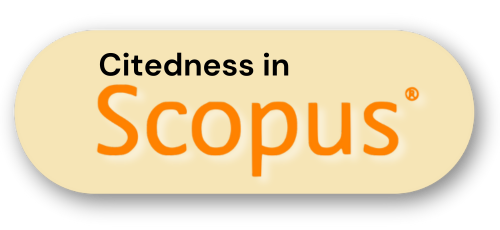Self Concept of Kery Astina as A Paradoy Youtuber
DOI:
https://doi.org/10.61194/ijcs.v1i2.226Keywords:
Self Concept, YouTuber, Kery Astina, PhenomenologyAbstract
A self-concept is very important in creating work which is now very easy with social media. By having a self-concept, a person can increase his self-confidence. This self-concept also influences the consistency and existence of someone who focuses on creating work through social media such as YouTube. The purpose of this research is to find out Kery Astina's motives for becoming a YouTuber, to find out Kery Astina's experience in forming his virtual identity, and to find out the meaning of subscribers for Kery Astina. Researchers used qualitative methods with a phenomenological approach. Data obtained using in-depth interviews and direct observation. The results of this research show that Kery Astina has past and future motives in forming her concept as a parody YouTuber. Apart from that, the experience of forming this parody self-concept created his image as a comedian and he felt proud of what he had achieved after becoming a parody YouTuber. Kery Astina interprets his subscribers as assets because of his money-oriented principle when he sees that the YouTube platform can make money. This research can add to the body of communication science, especially on cyber culture in the current digital era.
References
Adi, A. N., Reza, F., Ilham, Y., Sugiarta, N., & Lestari, A. (2023). IDENTITAS VIRTUAL HISQIE FURQONI DALAM YOUTUBE “GAK PENTING SIH CHANNEL.” Jurnal of Digital Communication Science, 1(1), 34–41. https://journals.inaba.ac.id/ DOI: https://doi.org/10.56956/jdcs.v1i1.182
Adi, A. N., Suminar, J. R., & Sjafirah, N. A. (2019). Pengalaman YouTuber Kota Bandung Dalam Membentuk Identitas Diri Virtual Dalam Media YouTube. PROMEDIA, 5(2), 132–170.
Anarcute. (2024). Profil YouTube Band Anarcute. Https://Www.Youtube.Com/@ANARCUTE.
Argyriadis, A., Patelarou, E., Paoullis, P., Patelarou, A., Dimitrakopoulos, I., Zisi, V., Northway, R., Gourni, M., Asimakopoulou, E., Katsarou, D., & Argyriadi, A. (2022). Self-Assessment of Health Professionals’ Cultural Competence: Knowledge, Skills, and Mental Health Concepts for Optimal Health Care. International Journal of Environmental Research and Public Health, 19(18). https://doi.org/10.3390/ijerph191811282 DOI: https://doi.org/10.3390/ijerph191811282
Astina, K. (2024a). Profil Kery Astina di YouTube. Https://Www.Youtube.Com/@KeryAstina/Videos.
Astina, K. (2024b). Wawancara Dengan Kery Astina.
Brad, & Scheep, D. (2009). How to Make Money With YouTube. . Mc Graw Hill.
Creswell, J. W. (2013). Research Design Pendekatan Kualitatif, Kuantitatif dan Mixed. Pustaka Pelajar.
Crystal, J. (2011). The Disclosure-IntimateLink in Computer-Mediated Communication: An Attributional Extension of Hypersonal Model. . Human Communication Research.
Davidson, D. (2021). There are now how many virtual youtubers?! Https://Otakuusamagazine.Com/There-Are-Now-How-Many-Virtual-Youtubers.
Durgungoz, A. (2022). Teacher as a YouTuber: Investigating Teacher-Generated Asynchronous Videos, Students’ Engagement, and the Teacher-Student Relationship. International Journal of Emerging Technologies in Learning, 17(15), 68–99. https://doi.org/10.3991/ijet.v17i15.31875 DOI: https://doi.org/10.3991/ijet.v17i15.31875
Gierlich-Joas, M., Hess, T., & Neuburger, R. (2020). More self-organization, more control—or even both? Inverse transparency as a digital leadership concept. Business Research, 13(3), 921–947. https://doi.org/10.1007/s40685-020-00130-0 DOI: https://doi.org/10.1007/s40685-020-00130-0
Hariyanto, A., & Putera, A. (2022). KONTEN KREATOR YOUTUBE SEBAGAI SUMBER PENGHASILAN. Jurnal Al-Hukmi, 3. DOI: https://doi.org/10.35316/alhukmi.v3i2.2325
Holmbom, M. (2015). The YouTuber: A qualitative study of popular content creators. Umeå University, Faculty of Social Sciences.
Kuatov, A. K., Abibulayeva, A. B., Kuatova, A. S., & Kashhynbay, B. B. (2021). Self-Concept and Time Perspective of Convicts. Journal of Intellectual Disability - Diagnosis and Treatment, 9(2), 247–255. https://doi.org/10.6000/2292-2598.2021.09.02.12 DOI: https://doi.org/10.6000/2292-2598.2021.09.02.12
Li, B., Bonk, C. J., & Kou, X. (2023). Exploring the Multilingual Applications of ChatGPT: Uncovering Language Learning Affordances in YouTuber Videos. International Journal of Computer-Assisted Language Learning and Teaching, 13(1). https://doi.org/10.4018/IJCALLT.326135 DOI: https://doi.org/10.4018/IJCALLT.326135
Mehrad, A. (2016). Mini Literature Review of Self-Concept. In Journal of Educational, Health and Community Psychology (Vol. 5, Issue 2). DOI: https://doi.org/10.12928/jehcp.v5i2.6036
Moleong, L. J. (2012). Metodologi Penelitian Kualitatif Edisi Revisi. Remaja Rosdakarya.
Mulaya, D. (2010). Metode Penelitian Kualitatif. Remaja Rosdakarya.
Nadila, S., Fitrya, T. A., Unde, A., & Aziz, S. (2018). PENGUNGKAPAN IDENTITAS DIRI MELALUI MEDIA SOSIAL: STUDI MENGENAI ETNOGRAFI VIRTUAL MELALUI VLOG. Jurnal Komunikasi KAREBA, 7(1), 83–92.
Pratiwi, A. P. (2023). IDENTITAS VIRTUAL PADA ROLEPLAYER DI TWITTER. Prosiding Konferensi Nasional Sosial Dan Politik (KONASPOL), 1, 215. https://doi.org/10.32897/konaspol.2023.1.0.2372 DOI: https://doi.org/10.32897/konaspol.2023.1.0.2372
Putri, I. T., & Astuti, R. D. (2021). COMPARATIVE AN TIVE ANALYSIS OF Y SIS OF YOUTUBER AND CELEBGRAM IN OUTUBER AND CELEBGRAM IN. ASEAN Marketing Journal, 4, 5–18.
Rakhmat, J. (2015). Psikologi Komunikasi. Remaja Rosdakarya.
Riswandi. (2013). Psikologi Komunikasi. Graha Ilmu.
Ronggowarsito, B. I., Ramdhan, Z., & Afif, R. T. (2023). Desain Karakter Virtual Youtuber sebagai Maskot Pembelajaran Menggambar. ANDHARUPA: Jurnal Desain Komunikasi Visual & Multimedia, 8(3), 353–367. https://doi.org/10.33633/andharupa.v8i3.5943 DOI: https://doi.org/10.33633/andharupa.v8i3.5943
Rudi Pratama, H., Franz La Kahija, Y., & Soedarto Tembalang Semarang, J. S. (2022). APA ARTINYA MENJADI YOUTUBER? ANALISIS FENOMENOLOGIS INTERPRETATIF TENTANG PENGALAMAN MENJADI YOUTUBER. In Jurnal Empati (Vol. 11). DOI: https://doi.org/10.14710/empati.2022.34465
Sergeeva, N., & Kortantamer, D. (2021). Enriching the concept of authentic leadership in project-based organisations through the lens of life-stories and self-identities. International Journal of Project Management, 39(7), 815–825. https://doi.org/10.1016/j.ijproman.2021.09.001 DOI: https://doi.org/10.1016/j.ijproman.2021.09.001
Suan, S. (2021). Performing Virtual YouTubers. In Japan’s Contemporary Media Culture between Local and Global (pp. 187–224).
Surjanti, J., Soejoto, A., & Seno, D. N. (2020). Mangrove forest ecotourism: Participatory ecological learning and sustainability of students’ behavior through self-efficacy and self-concept. Social Sciences and Humanities Open, 2(1). https://doi.org/10.1016/j.ssaho.2019.100009 DOI: https://doi.org/10.1016/j.ssaho.2019.100009
We Are Social. (2024). DIGITAL 2024 INDONESIA.
Weiten, W., Dunn, D. S., & Hammer, E. Y. (2014). Psychology Applied to Modern Life: Adjustments in the 21st Century. Wadsworth.
Yahaya, A. (2009). The Relationship of Self-Concept And Communication Skills Towards Academic Achievement Among Secondary School Students In Johor Bahru. International Journal of Psychological Studies, 1(2), 25. https://doi.org/10.5539/ijps.v1n2p25 DOI: https://doi.org/10.5539/ijps.v1n2p25
Downloads
Published
Issue
Section
License
Copyright (c) 2023 Achwan Noorlistyo Adi, Shinta Hartini Putri, Zulfanida Nurul Sadiyyah

This work is licensed under a Creative Commons Attribution 4.0 International License.





